Find Your Feed Rate On The Fly
Truly 'adaptive' motion control is now a retrofit option for a wide range of CNCs. This job shop uses the technology to reduce tooling costs and cycle times
Share




Hwacheon Machinery America, Inc.
Featured Content
View More

.png;maxWidth=45)
DMG MORI - Cincinnati
Featured Content
View More
Choosing the right feed rates for a production machining process is like placing a hedged bet. Run a little faster, and you can make a lot more money by increasing throughput. But run too fast, and you risk losing just as much money if this lets the cutting force spike too high. What if the end mill hits a stock envelope thicker than expected? What if chips bind up inside a hole being drilled? Meet either of these snags at an aggressive feed rate, and an expensive tool can shatter. This in itself can be costly, and so can the time that may be lost while the operator replaces the tool and restarts the cycle.
In fact, given all of the unexpected circumstances that can threaten a cutting tool, even an optimized NC program is still risky. Some programming systems can precisely tailor feed rate to the depth of cut for every distinct segment of each tool path. This can go a long way toward minimizing cutting force variations. Even so, feed rate and depth of cut are not the only determinants of this force. For example, another factor is tool wear. As wear increases, so does the force the tool sees. However, a system for managing worn tools is far more difficult to "optimize." An operator may not pull a worn tool in time, and even a diligent operator may lack the expertise to judge when a tool is too worn to continue.
Other sources of variability include stray chips and hidden hard spots in the material. All of these factors make it impossible to select precisely the right feed rate for any given cut. The best that a programmer can possibly do is to assign conservative, general-purpose feed rates to each program. These are numbers slow enough to see the tool through to the end of the cycle the vast majority of times the program is run.
It seems like there should be a better way. On almost any machining center, the elements are already in place to let the CNC set the feed rate automatically, based on the immediate condition of the cut. The typical machining center has a gage measuring the load on the spindle motor, and a dial for overriding the programmed feed rate. So why not tie these two together? Such a system could guard against tool breaks by slowing the feed when cutting forces are high, and it could guarantee optimal efficiency by increasing the feed rate wherever the cutting load proves lighter than expected.
It's not a new idea. Some manner of adaptive feed rate control has been around for at least two decades. However, earlier systems failed to realize the ideal necessary to achieve truly optimized cutting: adjusting the feed rate in real time to maintain a constant load. And while some CNCs came later which are capable of this real-time adjustment, there remained no widely accessible way to bring this feature to machine tools currently in service.
Now, that appears to have changed. That is the report of Steven Schatsiek, president of Morton Machining & Manufacturing—a 30-employee job shop in Morton, Illinois. This shop has been experimenting with automatic, truly adaptive feed rate override on a Mitsubishi vertical machining center modified to realize this capability. The hardware that makes the closed-loop machining possible is a CNC add-on developed by an Israeli company, OMAT Control Technologies.
Mr. Schatsiek's problem involved broken drills. The shop machines a ductile cast iron bearing assembly mount for a heavy equipment manufacturer. This part requires a custom 60 mm inserted drill costing $600, and "we were destroying these drills at the rate of about three per month," he says.
A local machine tool service company alerted him to adaptive control as a possible solution. About seven months ago, the adaptive unit was installed on the machine that runs the mount parts. Only three of the expensive drills have been broken since then. "And for much of that time, we were just learning the system," Mr. Schatsiek says. "We've adjusted the sensitivity since the last drill was broken, and I think now we may be to the point where we won't be breaking one of these drills again."
Keep The Cutter Purring
Shops have been using an approximate form of adaptive control for as long as there has been NC machining. In the early days, and perhaps in the majority of shops today, that adaptive system was called a machinist. Skilled machine tool operators who can gage the load on the tool just from the sound of the cut often put this experience to work while they hold one hand on the feed override knob. When the sound of the cut turns louder or deeper, the machinist dials the feed rate down. When the sound turns softer—perhaps because the tool is cutting air—the machinist increases the feed rate to speed the tool along until it is deep in metal again.
Automatic adaptive control works essentially the same way. Think of it as a machinist with a superhuman "ear" for cutting load, and a mechanically precise touch on the feed override knob. Just like the machinist, the adaptive control unit "listens" for any change in the cutting force, and raises or lowers the feed rate as appropriate to hold this force at a constant value. Instead of actually listening, however, it measures the cutting load directly from the spindle. And instead of overriding by touch, the system calculates the precise amount by which to change the feed rate to counter any load variations. Further, it makes this change instantaneously—not when the load has changed so much that a human ear can hear it.
In this way, the system guards against the negative consequences of the cutting force rising too high. But at the same time, it also guards against the consequences of this load dropping too low. In a traditional process, where the feed rates are all set in advance and run without variation, any cut that places less load on the tool than what the programmer allowed for is a lost opportunity for higher productivity. That lighter-than-expected cut could be run faster. With adaptive control, the cut is run faster, and "cutting air" moves are taken at the maximum feed override available on the CNC. On Morton's machine, this is 200 percent.
With this mechanism at work, hedging the bet by programming a conservative feed rate is no longer necessary. Each cut on each workpiece can be run as fast as the strength of the tool will allow.
Feed rates were carefully chosen in Morton Machining's NC routines before adaptive control was implemented. Even so, Mr. Schatsiek says the adaptive system has found room for improvement in every machining cycle to which it has been applied. Morton's typical NC cycle run with adaptive control requires five to seven percent less time, he says. Cycle time for the bearing assembly mount has been cut by 17 percent, in part because the shop used to run the drilling portion of this cycle so slowly.
These cycle time savings are averages, not firm values. With adaptive control, cycle times vary from workpiece to workpiece. A difference in tool wear, for example, may cause the adapted feed rate for one cycle to be slower than for the same cycle run previously. However, in Morton Machining's case, the variation in cycle time from one workpiece to the next is particularly pronounced, because the shop does so much work with castings.
Material Differences
"When you send the tool into a casting, no one can tell you what you're going to find," Mr. Schatsiek says. For example, the material envelope may vary. Localized swells in Morton Machining's workpieces may produce a milling depth-of-cut up to 0.030 inch larger than what the NC program assumes. At the same time, material hardness may vary even more. "Get a little more sand in the casting, and the tool may hit a region where the Brinell is much higher than it should be," he says.
Protecting tools from process variations like these is why Morton Machining has made adaptive control a standard part of every job run on the outfitted machining center, not just the bearing assembly part. The custom drills used on that part are costly, but standard tools can be expensive, too. Morton uses primarily carbide tooling, where once it might have used high speed steel. The more wear-resistant carbide tools do let the shop run faster. The irony is that carbide is the more brittle of these two tool materials, so a carbide tool is much more likely to shatter from the higher cutting forces it may encounter at the faster speeds.
In hole making, these costs can add up. Morton Machining's vice president of manufacturing, Charles Wilhelm, who writes the shop's NC programs, explains why. Drilling is often immediately followed by secondary hole making operations, he notes. "If a drill breaks, and the operator doesn't stop the cycle in time, then we may lose a reamer and a countersink tool, too," he says.
Adaptive control aims to avoid this problem by preventing the drill from breaking in the first place. However, even if there is a break, or if the hole is never drilled because of some other error, the system can still save the reamer and countersink. The unit can be programmed with a minimum override value, below which it will drop the feed rate to zero and display an alarm. For example, set a minimum override of 75 percent, and any load so high that it would cause the system to drop the feed rate below 75 percent of its programmed value would cause the feed to stop until an operator intervened. With this feature, the system can provide a safeguard against tools that are far too worn, workpieces that have been loaded incorrectly, and other oversights that might otherwise result in a crash.
Upfront Investments
Using adaptive control is not quite as easy as sending the tool into the cut and letting the load determine feed rate. There still does have to be a programmed feed, if only for the adaptive unit to use as a baseline. However, the system can generally determine on its own what target cutting load it should aim for when adjusting this feed. Once this target has been determined, the load can be called up from memory the next time that job—and that tool—is run. Each tool in the cycle will have its own optimum load, and in general, an NC cycle run with adaptive control will switch to a different pre-determined load value with each tool change.
There are two ways for the system to find these target loads. One is the system's "preset" mode. The operator inputs data including the workpiece material and the tool material and dimensions, and the system uses this information to calculate the maximum safe load for the cut. However, the easier method for the operator, and the one Morton Machining prefers, is the system's "learn" mode. In this mode, the system monitors the load throughout one run of the cycle entirely at the programmed feed rate. For each tool, the system takes the highest load it logged, and assumes that this load is safe. Each maximum load then becomes the target value for that tool during subsequent runs. To fine-tune the process, operators can nudge these preset targets up or down using arrow buttons on the control interface.
As a practical matter, for Morton Machining's operators to establish these loads adds about one hour to the setup time for the first run of any new part number. The simple procedure could be performed more quickly if operators had to do it more often. Even so, Morton sees a one-time, one-hour cost as worth the return in tool protection and cycle time for any of its production jobs. Soon, the shop will be making this same investment on another machine, this one a horizontal machining center, also from Mitsubishi. The shop's second adaptive unit was just recently installed on this machine, and adaptive control will soon become a standard part of every job run here, as well.
Charles Brown of DAR-Tech Inc., a machine tool service organization (also in Morton, Illinois), performed the installation of both units. He says this technology is widely applicable, but not universal. Newer Mitsubishi CNCs happen to work well with the retrofit unit, as do many other types of controls. However, "I have to be careful about what jobs I take on," he says. Older controls may not be able to interact with the system, he says. In addition, different controls vary in their ability to respond to signals from the adaptive control unit. Morton Machining's CNCs let Mr. Brown insert a macro so the control not only stops the feed when the adaptive unit hits the preset limit for spindle load, but also retracts the tool in the Z axis. This eliminates the need to require the operator to move the tool to safety through manual control. However, many CNCs will allow no response beyond dropping the feed to zero, Mr. Brown says.
When he installed Morton Machining's first adaptive control unit, the technology was almost as new to him as it was to the shop. The system has seen applications in Europe, but Mr. Brown had no experience that would tell him how well the unit would work on this particular CNC, or how effectively it would serve this shop's process. The traditional method of programming feed rates may be like a hedged bet, but Morton Machining's experiment with adaptive feed rate control was a bet with far less certain odds.
Morton Machining's Mr. Schatsiek says there is no other way to run a viable job shop today. Competition between shops is far more aggressive now than when he assumed management of this business. His customers know this, and therefore know they have the leverage to demand ever smaller leadtimes and unit costs.
"That's why I want this shop to keep trying new things," Mr. Schatsiek says. "We have to keep putting money back into finding new tools to help us perform better. Not everything we try works, and there was no guarantee adaptive control would work for us. But now it's become an accepted part of our process."
Production times are a little shorter, and the shop is passing along to customers less cost in broken tooling, he says.
"Adaptive control has become our latest incremental step up."
Read Next
Registration Now Open for the Precision Machining Technology Show (PMTS) 2025
The precision machining industry’s premier event returns to Cleveland, OH, April 1-3.
Read More5 Rules of Thumb for Buying CNC Machine Tools
Use these tips to carefully plan your machine tool purchases and to avoid regretting your decision later.
Read MoreBuilding Out a Foundation for Student Machinists
Autodesk and Haas have teamed up to produce an introductory course for students that covers the basics of CAD, CAM and CNC while providing them with a portfolio part.
Read More



























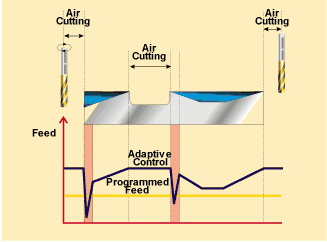
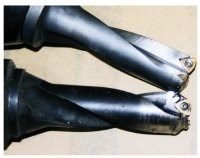

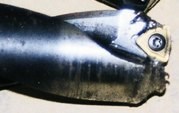
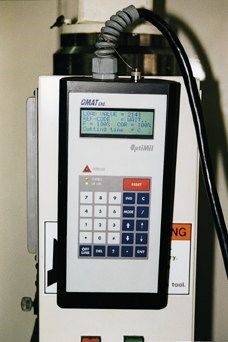
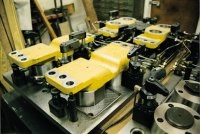
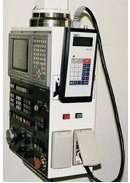





.jpg;maxWidth=300;quality=90)






.jpg;maxWidth=300;quality=90)









